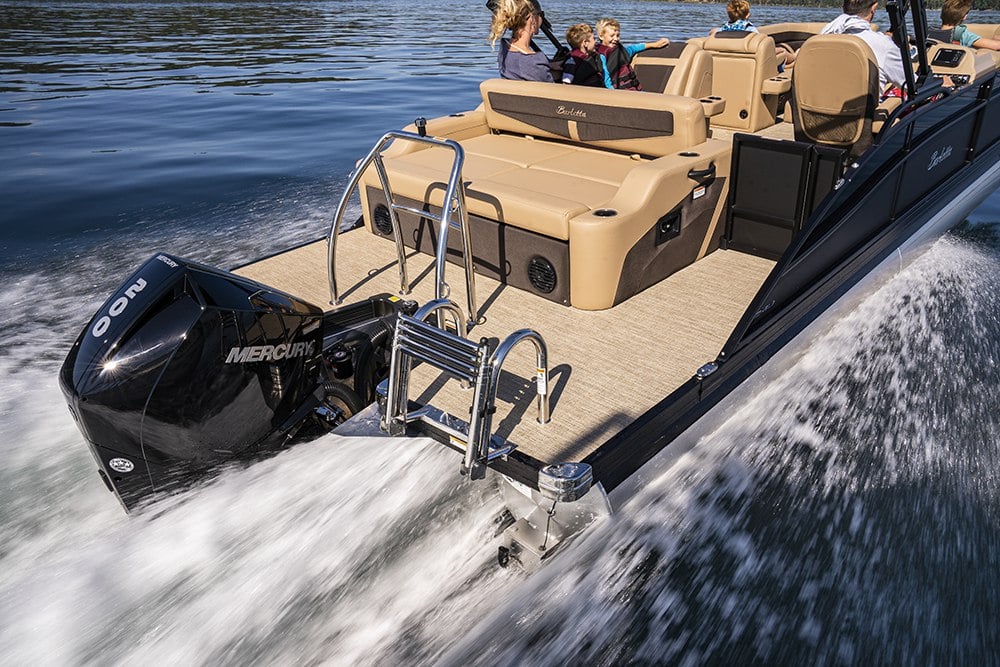What is Wrong with My Pontoon Boat Motor? (Troubleshooting Tips)
It’s the perfect day in July to be on the water so my husband already knows it’s a boat day. We’re planning an all day outing on the pontoon boat that will involve swimming, joining friends at the sandbar, and grabbing a bite at the local waterfront eatery.
The pontoon boat is loaded with coolers and gear, everything we need to stay out for hours until the heat breaks in the early evening. I jump in the captain’s seat, turn the key, and the engine fires right up.
I push off from the dock and we start cruising. All of a sudden, there’s a new feeling in the way the boat is handling. I can tell something is not quite right with the ride, but I can’t quite put my finger on it.
The engine started, we’re cruising, but the motor is not performing as it had the day before. Does this sound familiar? Have you noticed a change in your pontoon’s performance while underway?
While this isn’t something anyone wants to experience, fear not, this could be a symptom of a minor issue that is easily fixable. Before you call the dealer to make a service appointment, run through this list and see if you can diagnose the reason for performance loss yourself.
Performance Loss
When I refer to performance loss, I don’t mean that the engine won’t start. If that’s the case, check out our troubleshoot checklist for getting the motor running. I’m talking about changes in the way the boat handles once you’ve pushed off from the dock.
You may notice that your engine is not hitting the speed that it used to or reaching the RPMs that it typically would with the same crew on board. You might also feel a difference in the ride whether it’s vibrations coming from the motor or a jerking feeling while cruising at a steady speed.
If this is the case, consider these factors before making a service appointment. You might save yourself money and time away from your boat by being aware of these disruptors.
Check Your Toons
Have you noticed that you’re losing speed or the boat is lagging at top-end? You may just need to scrub it down!
Paul Adams, Engine Specialist with Mercury Marine, explains that one of the biggest maintenance items most people overlook is the cleanliness of the actual pontoons. Marine growth and lake scum buildup on the toons can have a significant impact on the top speed and fuel economy.
The images below are from customers that complained there was something wrong with the engine. They reported significant loss of boat speed & engine RPM.

Once the boat was power washed and then acid washed to remove all of the buildup, the boat performance speed & RPMs were right back where they were when new.
You could experience 10 plus miles per hour loss in performance with a dirty bottom which can happen in only a few weeks in certain bodies of water. If you don’t want to pull the boat just to clean the toons, take a soft bristle brush with you the next time you’re floating at the sandbar and scrub them down.
Another issue that you could experience is a leak in the toons. This is not a common occurrence but if you’ve damaged your toons while docking or have bottomed out on a rough surface, you could have put a hole in the toons.
Even an opening the size of a pin will let the toons take on water, so it’s important to catch this as soon as possible. The only way to sink a pontoon boat is to fill the toons with water, so stay alert if you think it’s possible this has happened.
If the toons are taking on water, you will notice that the boat lists to the side with the damaged toon. The added weight of the water can also have an impact on top-end speed.
When you pull the boat out of the water, you might hear the sound of water sloshing around while trailering. You may also see water pouring out of the toon. Stay vigilant while the boat is on the trailer if you think this is a possibility.
Inspect Your Propeller
Another component that plays a part in the boat’s performance is the propeller. Making sure your pontoon boat has the correct propeller is key. Most manufacturers will include a propeller that is right for the boat and that will give you optimal performance.
That said, the wrong prop can affect the speed you get out of the motor. If you’re looking to maximize the speed potential of your engine, you may want to discuss different options with your dealer.
If the prop is damaged by hitting inanimate objects while underway, you may feel it in the ride. The damage can send vibrations through the engine which can negatively affect the health of the motor and the boat itself. You may also feel slippage which is comparable to a jerking sensation while underway.
A damaged prop can also cause cavitation which you will feel in the form of vibration. Cavitation can cause pitting on the blades and hinders the way the blades bite the water. If you’re experiencing a less than perfect ride, you may want to check on your propeller, it could be the main cause.
Other On-Board Disruptors
There are a couple of things to consider aboard the pontoon boat that could be hindering the engine’s performance. If you notice that you’re not reaching typical speeds, these factors could be holding your engine back.
Something that I cannot stress enough is that every little bit of weight counts. If you are usually cruising on your pontoon boat with one other person, a small cooler, and a couple beach towels, you might be used to hitting a certain speed.
This will change once you load the boat down with more people, or gear, or animals, or a full tank of gas. The engine will not perform as it does when you have an empty boat.
Another small detail to keep in mind is that when the bimini is deployed, the boat will perform differently. Make sure to check your owner’s manual for direction on the maximum speed allotted while it’s deployed.
Windy day or not, the bimini canvas will act as a sail while the boat is underway. This will create drag and can hinder the speed you get out of the motor. Slower speeds are your best bet when using the bimini.
What is Next?
If you’ve considered all of these factors and your boat is still not performing as it should, it may be time to call the professionals. There are common issues that could arise with any pontoon boat even though the care and maintenance is minimal.
Caring for your boat and outboard motor regularly will ensure a long, healthy lifespan. Talk to your dealer’s service department about best practices for what you as an owner can do at home to make sure your engine stays running like the fine tuned machine that it is.



